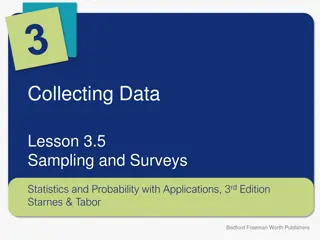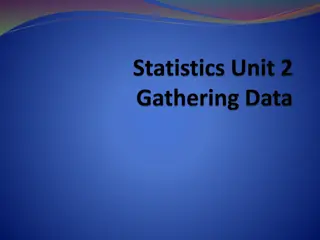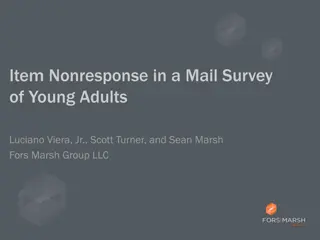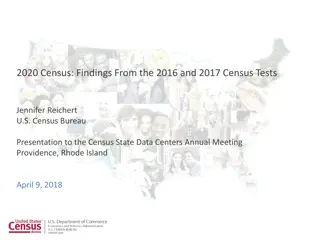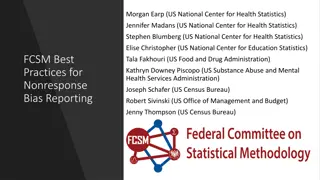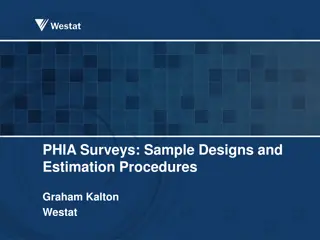Challenges and Successes in 2020 Census Nonresponse Follow-up: Insights and Recommendations
Explore the challenges faced during the 2020 Census Nonresponse Follow-up (NRFU) operation, including difficulties in proxy procedures and lessons learned. Qualitative and quantitative results shed light on the complexities encountered in enumerating households that did not complete the census quest
0 views • 10 slides
Understanding Bias in Sampling and Surveys
This lesson explores how undercoverage and nonresponse can introduce bias in sample surveys, affecting the reliability of the findings. Through examples like malnourished dogs and alumni income surveys, the text highlights how sampling methods can lead to skewed results. Understanding these biases i
0 views • 12 slides
Understanding Bias in Sampling and Surveys
Bias in sampling and surveys can arise from undercoverage, nonresponse, and response bias. Even when samples are randomly selected, various factors can lead to inaccurate results. Researchers need to be aware of these biases and take steps to minimize them, such as testing surveys before full deploy
0 views • 8 slides
Choosing Between Observational Study and Experiment in Research
Observational studies involve recording data without interfering with subjects, while experiments impose treatments on subjects to establish cause and effect. A well-controlled experiment is crucial for determining causation, while observational studies can provide quick results at lower costs. Each
0 views • 24 slides
Challenges in RDD Telephone Surveys for Young Adults: Item Nonresponse and Coverage Implications
This research study conducted in Quebec, Canada, in 2011 focused on the challenges faced in RDD telephone surveys, specifically targeting young adults. It discussed issues such as decreasing coverage due to wireless-only households, nonresponse rates, and the impact of emerging trends on survey meth
0 views • 20 slides
Insights from 2016 Census Tests by U.S. Census Bureau
The U.S. Census Bureau conducted tests in 2016 to refine technologies and methods for self-response and nonresponse follow-up operations. The tests aimed to enhance outreach efforts to historically hard-to-count populations, utilize non-Roman languages, and improve interview procedures for multi-uni
0 views • 25 slides
Best Practices for Nonresponse Bias Reporting in Federal Surveys
This content presents the best practices and guidelines for reporting nonresponse bias analysis in federal surveys. It covers describing the survey subject, unit response rates, evaluation plans, and mitigation strategies. The aim is to provide a common framework for federal agencies to conduct and
0 views • 27 slides
PHIA Surveys: Overview of Sample Designs and Estimation Procedures
This presentation covers the nationally representative three-stage sample design of PHIA surveys, focusing on the sampling of Census Enumeration Areas (EAs), households, and persons. It discusses the importance of weighting to account for selection probabilities, nonresponse, and noncoverage, as wel
0 views • 15 slides

